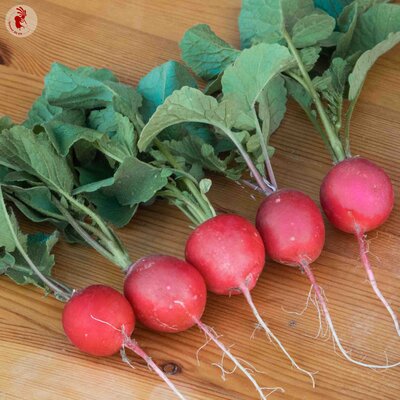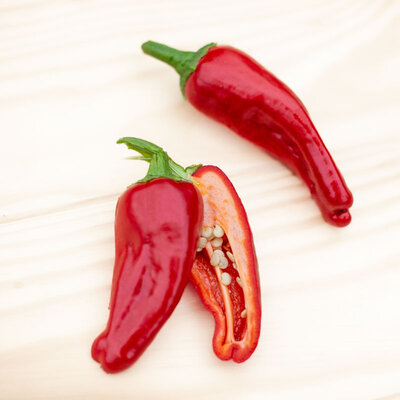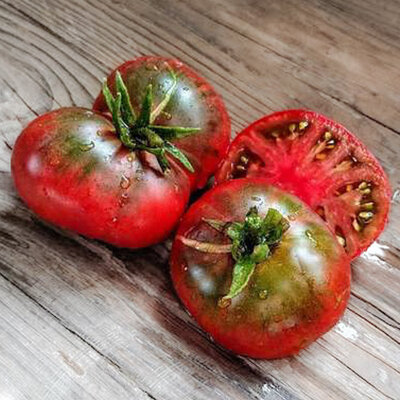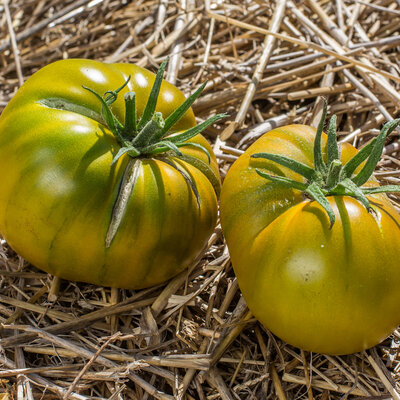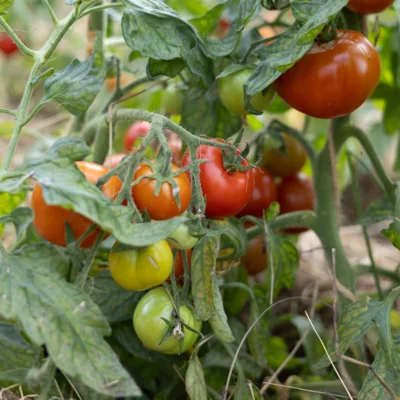
Red Hearted Chantenay - Orange Carrot
This variety produces orange, conical, half-long roots - from 12 to 18 cm - with a rounded tip. Their firm, red flesh has a highly appreciated flavor.
This hardy variety is suited to heavy soils and can be stored for several months.
Origin of the Chantenay à Cœur Rouge carrot
The Chantenay à Coeur Rouge carrot, Daucus carota, is a very old root vegetable variety, originating from Chantenay in Brittany. It was first mentioned in Vilmorin-Andrieux's 1890 book Les Plantes Potagères. Its orange, conical roots, 12 to 18 cm long, contain sweet, red flesh. They adapt to clay soils and can be sown from spring to autumn. They keep well and are easy to cook, either raw or cooked.
In a similar color, there is also the improved Dolciva Nantaise carrot and the Red Heart Colmar carrot.
How to sow Chantenay à Cœur Rouge carrot seeds?
Chantenay à Cœur Rouge carrot seeds are sown directly in the ground, from February to July. Choose a sunny spot to plant your crop, and favour rich, well-drained soil that stays cool.
- Sow carrot seeds in the vegetable garden, in rows 25 cm apart. Cover with a thin layer of soil and lightly plumb. Emergence takes place 6 to 21 days after sowing, at temperatures between 10 and 24°C. Keep substrate moist until carrot seeds germinate;
- When plants have 3 leaves, thin to 5 cm, then a few weeks later, to 8 cm. Protect young shoots from slugs if possible;
- Water regularly in the month following sowing to encourage good root development;
- Mulch the soil to keep the carrots cool.
Be careful during the first three weeks of root development: compressed soil and the presence of stones may deform the carrot as it matures.
To help carrots develop properly, consider planting companion plants close to the crop: onion, tomato, lettuce, radish, etc.
When to harvest Chantenay à Coeur Rouge carrots?
This variety of carrot can be harvested from June to the first frosts, 60 to 80 days after sowing. If the plants are mulched, or if there's no frost, they can be harvested all year round, right up to flowering in spring.
To store, let the carrots dry for a few days before cutting off the tops a few centimetres above the collar, then wipe dry and store in a sheltered place such as a gauge, silo or cellar. They can also be stored in the ground in the vegetable garden. Cover them with a good layer of straw or leaves, at least 20 to 25 cm high, to protect them from frost. Carrots also keep well grated and lacto-fermented.
What are the benefits of carrots?
In the 13th century, carrots were considered primarily as a spice, especially for their leaves and seeds. The fruit was mainly used as feed for cattle and horses. It wasn't until the early 20th century that carotene and its benefits were discovered.
Today, the Chantenay à Coeur Rouge carrot is a classic in the garden and on our plates. It is as appealing for its taste as for its nutritional qualities. In Western countries, it accounts for one in every five vegetables purchased. Carrot seeds contain an essential oil used in perfumery and aromatherapy for its liver-regenerating and bile-stimulating properties, as well as for its skin-regenerating action. The carrot is also a tinctorial plant, used to color butter and certain cheeses.
Rich in vitamins A, B, C and E, as well as beta-carotene, this root vegetable promotes healing and regeneration, and helps regulate intestinal transit. Composed of 90% water, carrots can be made into juices and syrups, or enjoyed on the plate. Raw, it can be grated. Cooked, they can be simmered, roasted, pan-fried or steamed.
These products may also be of interest to you
in the ground
Sow in rows 25 cm apart. Pack lightly. Thin to 5 cm, then to 10 cm when plants are 10 cm tall. If possible, protect young shoots from slugs. Sow in February and March in tunnels or trays, staggering sowing every 2 to 3 weeks to spread out harvesting.
Water regularly, but lightly, to encourage emergence, then more abundantly once a week the month after sowing to prevent the roots from "digging in". Carrots can be harvested all year round if the soil does not freeze or if it is protected by mulch.
April, May, June, July
July, August, September, October, November
in the ground, in the greenhouse
sunny, semi-shade
medium
all floor types
drained, furniture, rich
Daucus carota
mid-season
From 50 to 150 g
4 grams
conical
farm
Orange
From 12 to 18 cm
France
"Vilmorin-Andrieux "Les Plantes Potagères
This very old variety originates from Chantenay in Brittany. It is mentioned in Vilmorin-Andrieux's 1890 book "Les Plantes Potagères".



